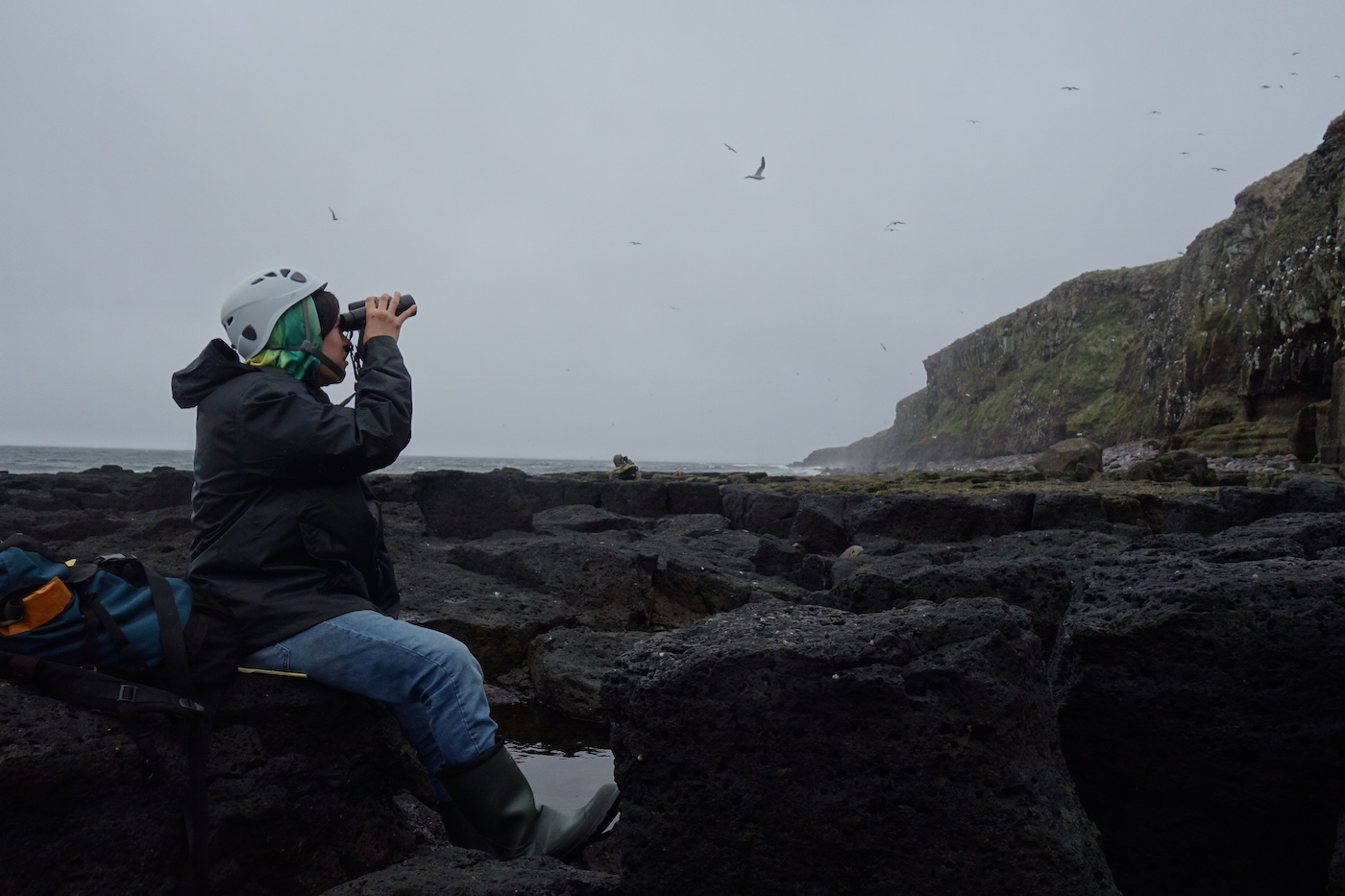It’s the end of May, and birds are already starting to nest on St. George Island. The kittiwakes are busy collecting nesting material, stomping on their nests, and a few eggs have been observed in productivity plots. They are starting to breed early this year!
Ann made it out to St. George to work with Thomas (a high school intern with APICDA), and do some fieldwork and fun seabird activities with the younger kids.It’s Thomas’ second year as an APICDA intern, and we’ll be building on some of the skills gained last year, and learning some more. We are all interested to see if this year will be a better breeding season for the seabirds. So, far, it’s looking much better for the kittiwakes.
Day One
It was a day of working out glitches, and learning that fieldwork often goes like this!
We spent a chunk of the morning learning about trail cams, and trying to figure out (without success) a good place in the auklet colony to place it. We’ll be using trail cams to take photos of Least Auklets. The cameras are programed to take photos every 4 minutes, and they will run continually for 2 days.
These images will be used over the winter to train a computer program to recognize images of Least Auklets. The hope is that the computer program will then be able to count birds from images taken over the summer, saving hours of labor in the field (and in front of the computer). This type of artificial intelligence is being used more commonly in biological fieldwork, and it’s an exciting tool for researchers.
Numbers of birds can tell us about population trends, and also give us information about the amount of time individuals are spending at the colony (versus out at sea looking for food). Rachael Orben and Abram Fleishman will be working on the computer program over the winter, and we’re excited to see how they get on.
After exploring the Least Auklet colony, we headed down to the cliffs to look for some banded red-legged kittiwakes. Looking for birds banded in previous years is called Resighting. Resighting data can tell us about the overwinter survival of birds.
It was wonderful to see how many birds there were on nests. We saw several copulations, and a lot of birds busy flying with nesting material. It was a cold and windy day, and the North wind was too strong for us to hold the scopes still… and we ended up bailing on the resighting for a calmer day.
The evening ended with a Friday night movie and popcorn at the clinic. Thanks Lori!

